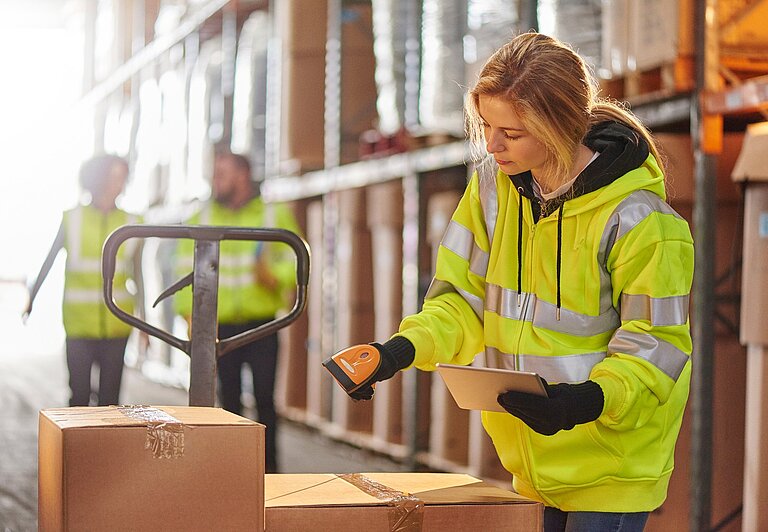3PL vs 4PL: The Differences Explained — Including All Benefits and Examples

In today’s globalised economy, efficient logistics are crucial to business success. Terms like Third Party Logistics (3PL) and Fourth Party Logistics (4PL) are becoming increasingly important — but what exactly sets these models apart, and what unique value does each provide?
This article explores the key differences between 3PL and 4PL and highlights the strategic roles they play in modern supply chains.
What does 3PL mean? A Definition
- The term 3PL (Third Party Logistics) refers to service providers that handle logistics tasks — such as storage, order picking, packaging, and shipping — on behalf of other companies.
The “third party” in 3PL highlights the involvement of an external company in the process. It is neither the producer nor the retailer, but a third actor operating within the supply chain.
In English-speaking markets, 3PL is often used synonymously with fulfilment. Fulfilment providers manage the entire operational process, particularly for e-commerce businesses.
For companies, working with a 3PL provider means outsourcing their logistics processes to a specialised partner. This partner manages the operational side of the supply chain, allowing the business to focus on its core activities such as product development, marketing, or sales.
In short, a 3PL provider serves as the operational backbone — relieving businesses of logistical burdens and enabling efficient, scalable logistics.

What is behind the term 3PL = Third Party Logistics?
The "Third Party" in 3PL emphasizes that a third, external company is involved in the process. It's neither the producer nor the retailer themselves, but a third player active in the supply chain.
These "third parties" are experts in their field and relieve companies of the pressure to handle complex logistical tasks. The concept of logistics outsourcing is fully utilized here to make business operations more efficient.
What are practical examples of 3PL in e-commerce?
A tangible example often helps in understanding:
Let's consider a shoe manufacturer. They want to operate globally and offer their products on different continents. Instead of building their own warehouses and setting up a worldwide shipping network, they use the services of a 3PL provider, also called a fulfillment provider.
This provider stores the shoes and automatically processes all incoming orders. They package the shipments, organize the shipping, and oversee returns. The manufacturer only needs to worry about production and marketing, while all logistical tasks are taken over by the 3PL provider.
How do 3PL and 4PL differ from each other?
3PL companies offer specialized logistical services. 4PL, or "Fourth Party Logistics", expands on this concept:
- A 4PL provider not only looks after specific logistical tasks but oversees the entire supply chain. They coordinate several 3PL providers, integrate necessary technologies, and optimize logistical processes.
One could say that a 4PL provider is like the conductor of an orchestra, ensuring that all instruments in the supply chain play harmoniously together.

Example: What a 4PL provider is!
4PL providers don't just handle logistics; they manage and optimize the entire supply chain.
- A clear example:
A globally operating company that manufactures electronic products has several suppliers, production sites, warehouses, and distribution channels around the world. It uses various 3PL providers for transport, storage, and regional distribution. However, it faces challenges in coordinating all these elements.
This is where the 4PL provider comes in.
This 4PL provider first analyzes the company's entire supply chain, identifies bottlenecks, inefficient processes, and potential cost savings. They then present a tailored strategy to optimize the supply chain.
Since they don't possess their own physical resources – no trucks, ships, or warehouses – they are unbiased in selecting the best 3PL providers. They choose the best partners, negotiate contracts, and coordinate all logistical activities. Moreover, they integrate cutting-edge technology for monitoring and data analysis to make real-time decisions.
With the use of the 4PL provider, the company can not only save costs but also make its supply chain more flexible and responsive. In the event of sudden market changes or disruptions, such as natural disasters, the 4PL provider can quickly switch to alternative supply chain partners or routes.
At the end of the day, the company benefits from a leaner, more cost-efficient, and resilient supply chain – all thanks to the strategic guidance of the 4PL provider.
What role does 3PL play in the supply chain?
- The "supply chain" describes the entire process from production to the consumer.
3PL service providers are key players in ensuring that products get from A to B efficiently.
They can take over parts or all of the logistics and thus help to ensure that the supply chain functions smoothly and cost-efficiently. With their expertise, they help companies to master challenges in logistics and achieve competitive advantages.
What characterizes a 3PL logistics company?
A 3PL company is more than just a service provider.
It is a partner that has special tools, technologies and an extensive network. Such a company offers value-added services that go beyond mere storage and transport. With their expertise, they advise customers, optimise processes and ensure effective and efficient logistics.
The bottom line is that these fulfilment providers ease and take over your logistics worries and make sure that everything runs professionally. We are one of these fulfilment providers - discover our extensive range here.
The best thing about it is that you can focus on growing your business and your logistics will scale with it, without having to change much structurally.
Do you have questions or need support with your logistics?
Sources
These are the largest transport companies in the world
www.capital.de
Statistics and market volume of the logistics market - Statista
en.statista.com
Quivo © 2025; Canva






